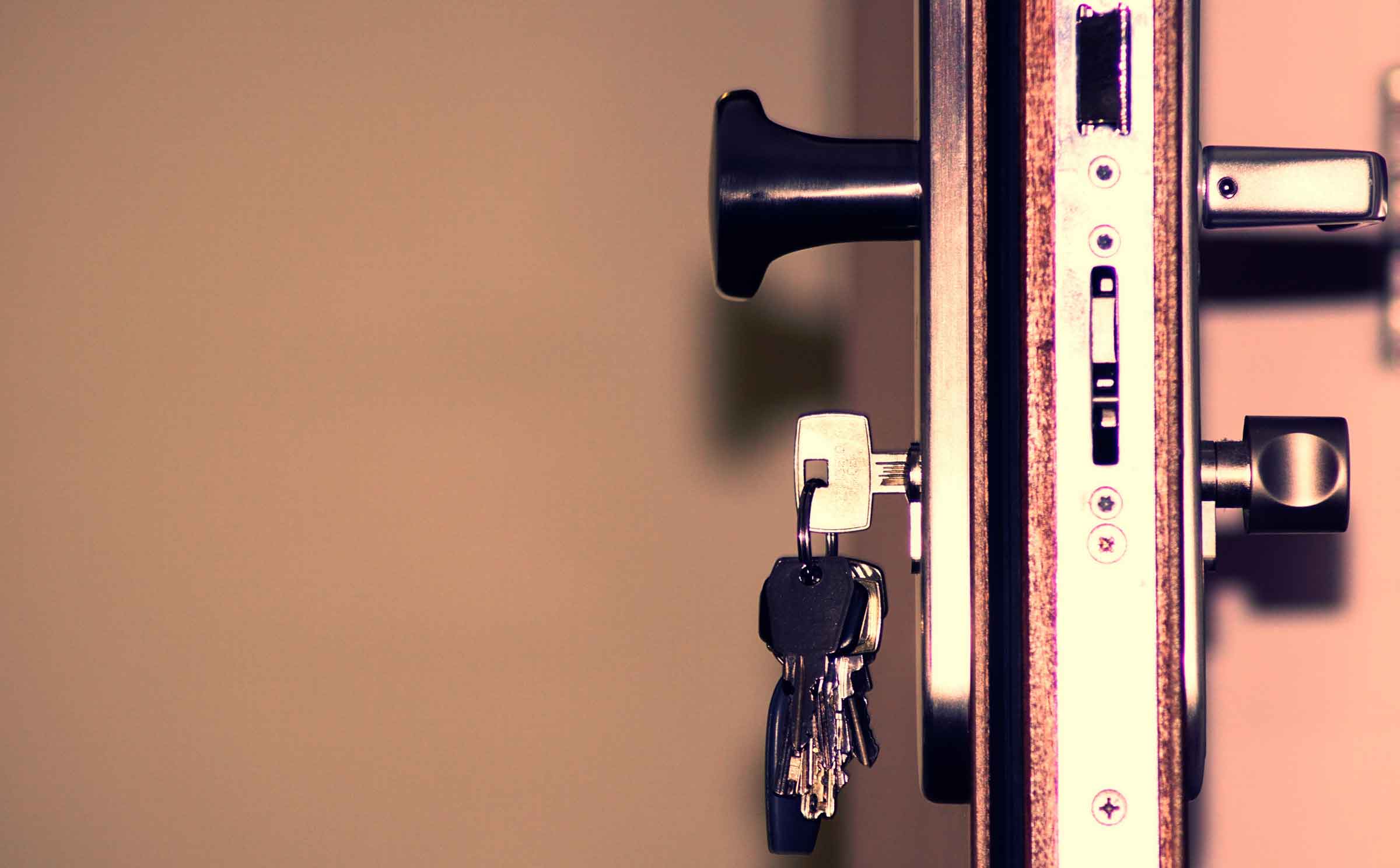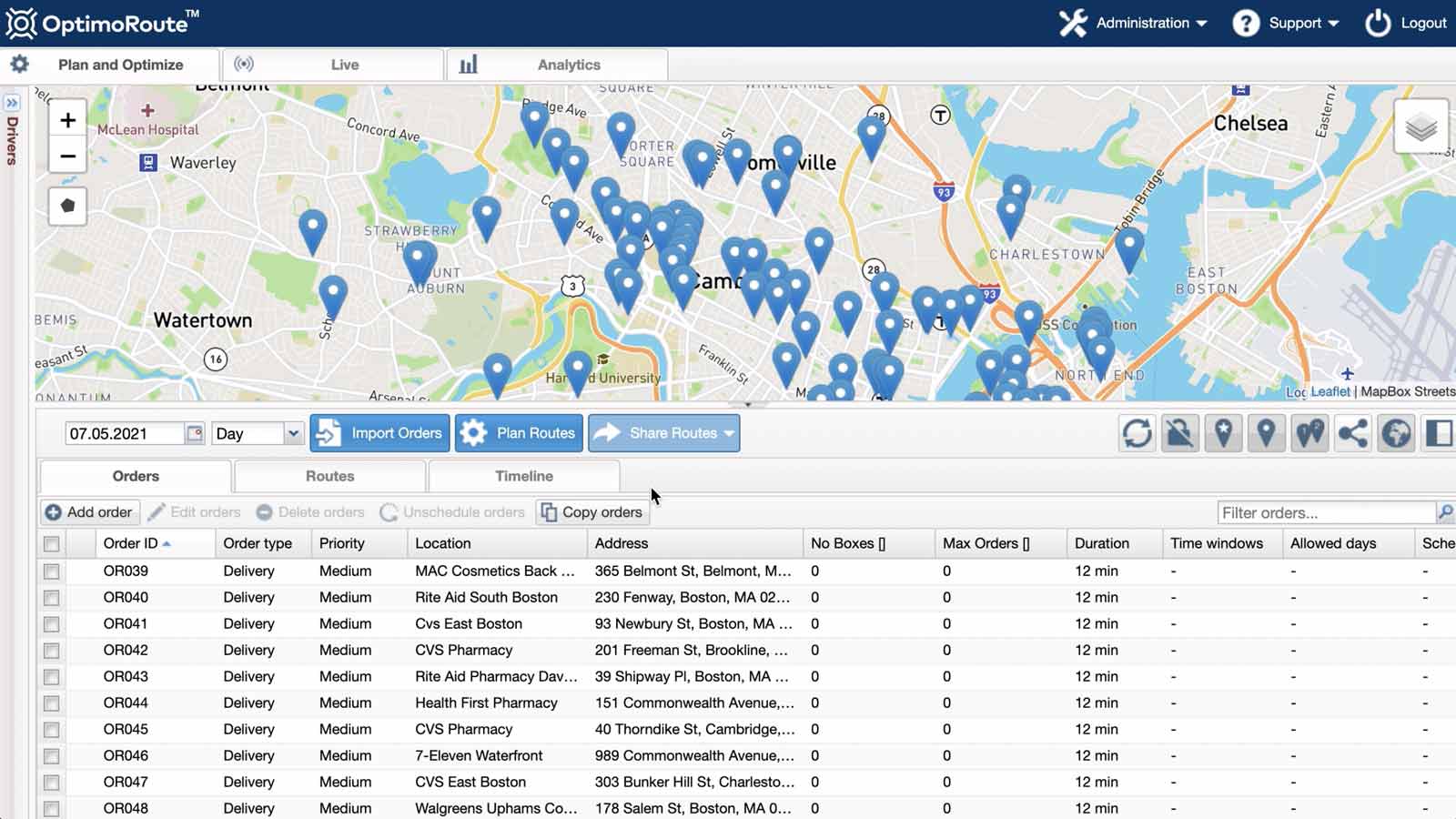How to Start and Optimize a Locksmith Business
January 18, 2022 7 min read

If you’re thinking about starting a locksmith business, now’s a great time. With smart locks and new security systems increasing in popularity, it’s a time of growth and transformation for the locksmith industry. In the U.S., the smart lock market is expected to grow at a compound annual growth rate of 12% between 2020 and 2026, driven by “safety concerns, growing home automation, rising awareness of IoT, and growing industrial and commercial sectors.”
And it’s not just the door hardware that’s gone high-tech. The right software can help you provide an efficient experience for your customers and reap the rewards of building an optimized business.
Jump ahead to the section that interests you most:
- How to Start a Locksmith Business in 7 Steps
- Routing and Scheduling: Two Key Challenges of Operating a Successful Locksmith Business
- OptimoRoute: Your Secret Weapon for Maximizing Efficiency & Profitability
- FAQ Section About Starting a Locksmith Business
How to Start a Locksmith Business in 7 Steps
Setting up a business can feel like a leap into the unknown. These steps will help you understand what’s involved in setting up a locksmith company and finding your first customers.
1. Make sure you meet requirements for your state
Locksmith requirements vary from state to state. Some require you to get a license, some require background checks or specific qualifications, and others have no regulations at all.
As there’s no countrywide standard for locksmith businesses, you must understand your state’s regulations and industry standards before starting your company. As a starting point, the Associated Locksmiths of America (ALOA) lists licensing laws by state, and you should also check the legislation in your home state as that will have the most up-to-date information.
2. Get a locksmith license
If your state requires a locksmith license, you should have yours before you start promoting your business or carrying out work for customers. The requirements will vary by state but could involve:
- Training courses
- Formal exams
- Practical work experience
- Background checks
- Registration fees
Some business licenses may last for several years, and others may need renewing each year. Check the licensing requirements in your state to make sure your paperwork is complete.
3. Create a business plan and secure funding
Starting a small business comes with many initial and ongoing costs, such as buying and maintaining equipment, buying a vehicle, leasing business premises, staffing, and advertising to find your first customers.
Fortunately, you have different options available to secure funding for your new business, including from the government. To apply for funding, you need a formal business plan. This document shares how your business will make money and grow long-term. It should include:
- What your business does
- A description of your services—for example, if you’ll specialize in mobile locksmith services, access control, residential, or commercial lockouts
- Industry information
- Business structure, including the number of employees
- Information about your target customers
- Information about competitors, such as other locksmiths in your service area
- Pricing and cash flow projections for the business
4. Purchase vehicles and equipment
To provide locksmith services in your local area, you’ll need a company vehicle (or vehicles, depending on team size) for traveling to jobs. You’ll also need basic locksmith tools and equipment, including:
- Plug spinners
- Lock pick sets (mechanical and computerized)
- Key extractors
- A locksmith hammer
- Key cutters
- Key blanks
- Router drills
- Master key set
You may also need more specialized equipment, for example, if you specialize in commercial locksmithing, automotive, or electronic locks.
5. Choose a service area
You’ll likely choose your local area as the service area for your locksmith business, as you already know the city or town, and you may already know lots of people who live or work there.
Choosing a service area can help you work out if you should specialize with your locksmith services. For example, if you’ll be serving a predominantly residential area, homeowners will be your target audience, and there will be less demand for commercial locksmith services. However, if you’ll be serving an area with lots of commercial or industrial units, it may make sense to focus on local businesses as your target customers.
6. Set your prices
When you set your prices, look at other locksmiths in your local area to get an idea of how much people will pay for locksmith services. Looking at other areas— for example, in the city if you’re in a more rural location— can mean you set your prices too high, and you miss out on business.
When you’re first starting, you may want to consider offering introductory deals to build trust in your local community and find your first customers.
7. Focus on digital marketing
When you’re starting a locksmith business, digital marketing can help you get those all-important early customers by making sure people can find you online.
The first areas you should focus on include:
- Your company website. Your business will look reputable and trustworthy to potential customers
- Social media profiles, such as a Facebook page
- Local directories and listing sites, like Yelp or Angi
- Your Google My Business listing, so your business shows up when people search for ‘locksmith near me’ or ‘local locksmith’
Building up your online reputation with positive customer reviews can help you secure new customer referrals through word-of-mouth recommendations.
Routing and Scheduling: Two Key Challenges of Operating a Successful Locksmith Business
Once your locksmith business is up and running, you’ll want to identify opportunities to improve efficiency, so you can serve as many customers as possible without having to bring on more staff (and manage the costs that come with a growing team).
Routing and scheduling are two opportunities to improve efficiency but can be a challenge for many businesses. Scheduling is the process of planning the time windows for each job and who will go to each callout. Routing is the process of mapping out the specific routes your locksmiths will take to all the jobs on their schedule.
Scheduling is a challenge because you need to have enough flexibility in the schedule to accommodate urgent or last-minute callouts, but you don’t want to under-utilize your team. And routing is a challenge because you need to know your day’s schedule to plan your team’s routes ahead of time, so you can best optimize based on travel time and transport costs.
If you master routing and scheduling, you’ll feel the benefits across your business. In addition to improving team productivity and efficiency, you’ll build a reputation in your community for reliability and trustworthiness as you get to all your jobs on time.
OptimoRoute: Your Secret Weapon for Maximizing Efficiency and Profitability

Scheduling and routing can help your locksmith team be more efficient, and in turn, maximize profits. But manually planning schedules and mapping out routes is incredibly time-consuming. Manually-created routes and schedules are difficult to keep up-to-date if you have a last-minute callout or one of your team calls in sick. Instead, you can use scheduling and routing software like OptimoRoute to remove the manual work of planning your daily routes or weekly schedules.
Automatically plan routes
OptimoRoute will automatically plan your schedule based on the different jobs you’ve got booked and then plan the most efficient routes to help your team cover more callouts in their day.
To start planning your routes in OptimoRoute, upload your callouts and service bookings from a spreadsheet or document. You can choose how to optimize your schedule—for example, based on time savings or giving all your locksmiths a balanced workload—and click a button to plan your route automatically.
Learn more about how you can use OptimoRoute to plan and optimize your work schedules.
Plan your schedule weeks ahead of time
Planning your employees’ schedule in advance leaves less room for error and can help make your whole team more efficient. You can schedule jobs to make the best use of your locksmiths’ time and schedule breaks at times when it’s going to have the smallest impact on your customers.
With OptimoRoute, you can schedule jobs up to five weeks in advance, which helps your team plan ahead, order any new equipment they may need, and make sure they’re fully prepared for the upcoming jobs.
Less time traveling equals more jobs
OptimoRoute allows you to serve 50% more customers with the same number of employees by creating the optimal routes for all your locksmiths. You can fit more jobs into the day by optimizing your schedule—slotting shorter jobs in gaps you might not have noticed.
Using OptimoRoute to plan your routes and schedules means you can spend less time traveling and more time on the job and helping customers.
Schedule the right tech for the special jobs
Using OptimoRoute, you can ensure the right locksmith and the right equipment get to specialist jobs. You can set up different parameters for your jobs, such as type of customer, type of job, or skills required.
OptimoRoute will automatically create the schedule, so the right equipment is at the right job to keep your customers happy and provide the high-quality service you want to be known for.
Real-time tracking and customer notification
You can use OptimoRoute to track your locksmith team in real time. You can see when they finish jobs and if they’re running behind schedule. But there’s more. OptimoRoute automatically updates customers if your arrival time changes through Realtime Order Tracking. That means you don’t have to spend time calling up your customers and letting them know if your work crew is going to be late.
You can also automatically calculate new routes and schedules to account for cancellations or new appointments. This helps your team get to their jobs as quickly as possible and keeps your customers updated, so they know when to expect your locksmith to arrive at their home or business.
Get started with OptimoRoute by signing up for a free trial today.
FAQ Section About Starting a Locksmith Business
Below, we answer some of the most frequently asked questions about starting your own locksmith business and related topics.
How profitable is a locksmith business?
Your locksmith business profits will vary depending on size, location, and the services you offer. According to Salary.com, the average locksmith salary in the U.S. is between $46,551 and $60,492. And the locksmith industry is growing slightly: by 2024, it’s predicted that its annual revenue will pass $2.5 billion.
What do I need to start a locksmith business?
To start a locksmith business, you need a range of locksmith tools and equipment and a vehicle to get to all your callouts. You may need special licenses or qualifications if they’re required in your state.
What are the challenges of starting a locksmith business?
Starting a locksmith business can be challenging for several reasons:
- It can be difficult to build a trustworthy reputation when you’re first starting out.
- Locksmith work can be inconsistent: no one needs a locksmith every day of the week.
- You’ll likely need to work all hours, including late nights, for emergency service, or 24/7 callouts.
- You’ll need to invest in equipment, training, and licensing before you can start operating the business, meaning you have upfront costs before you can start generating income.
Try OptimoRoute™ for Free
No installation or credit card required


